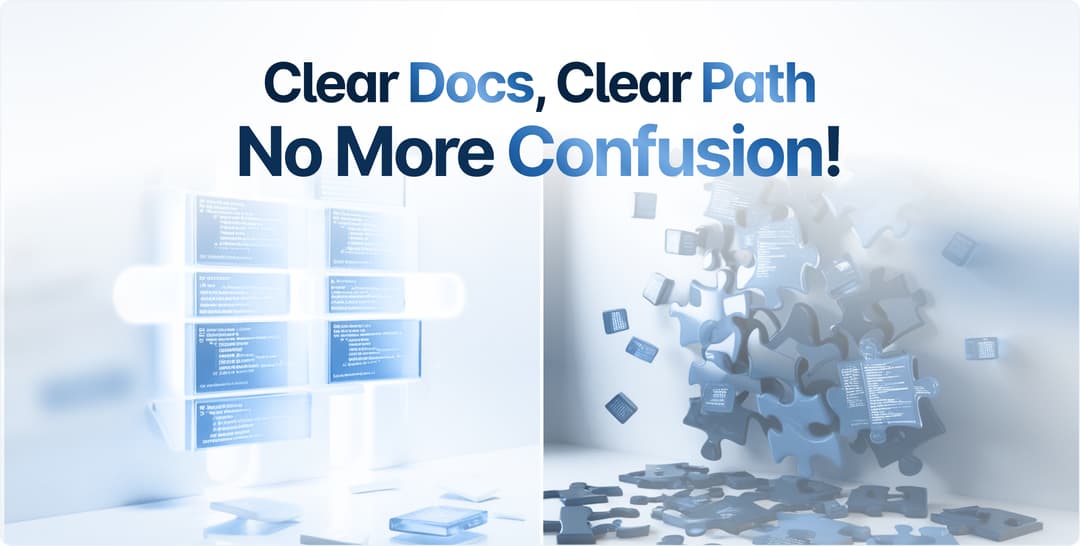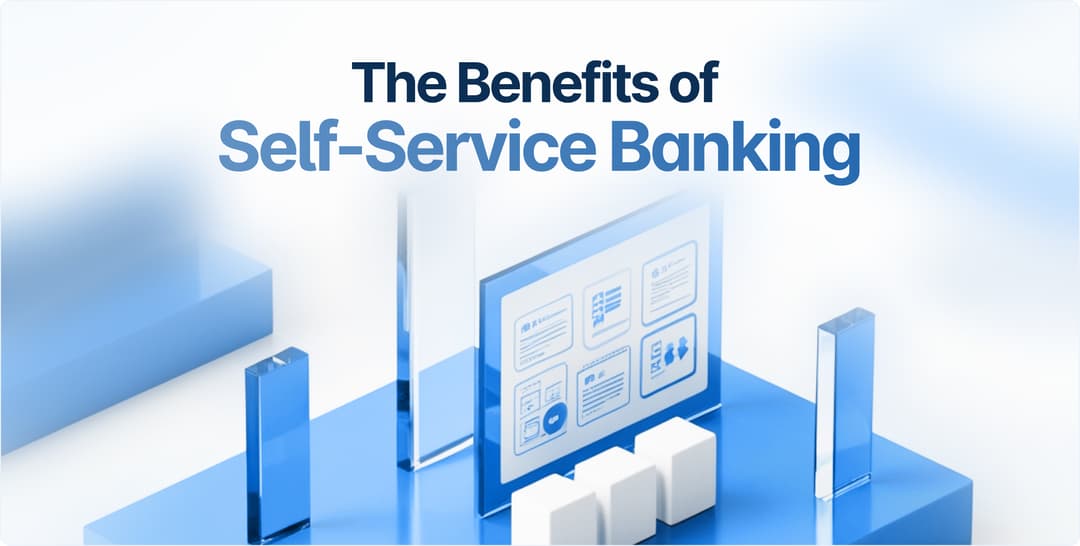Imagine if everyone in your company had the knowledge to perform their job immaculately. That way, even if they didn’t know everything right away, the employees would at least have access to the right information and insights, thus always having the ability to learn.
This imaginary scenario might sound too good to be true, but if you implement a knowledge-sharing culture and focus on exchanging ideas, it can become your company’s reality.
Knowledge sharing is the best step forward your company can take, and we’re here to introduce the best methods for it. Hopefully, at least a few of them will be a good fit for your business.
Proprietary Online Training
Proprietary online training is catered to your employees’ needs, which makes it valuable to companies.
This type of training is geared towards the specific tasks your employees encounter. Therefore, you will have to invest time and money into creating it, but it will pay off once you do.
Using someone else’s training program and modules means forcing people to go through training that won’t actually benefit them.
Sadly, Ipsos's research found that a fifth of employees receive training that isn’t relevant to their role.
If the training isn’t helpful to your employees, they will be less knowledgeable and productive, negatively impacting your company as a result. Therefore, the type of training that is explicitly tailored to the needs of your team and their professional duties will garner the best results.
Let’s take Rentokil Initial, a business services company, as an example.
The company has over 30,000 staff members across 70 countries, so they had to turn to online training to ensure consistency.
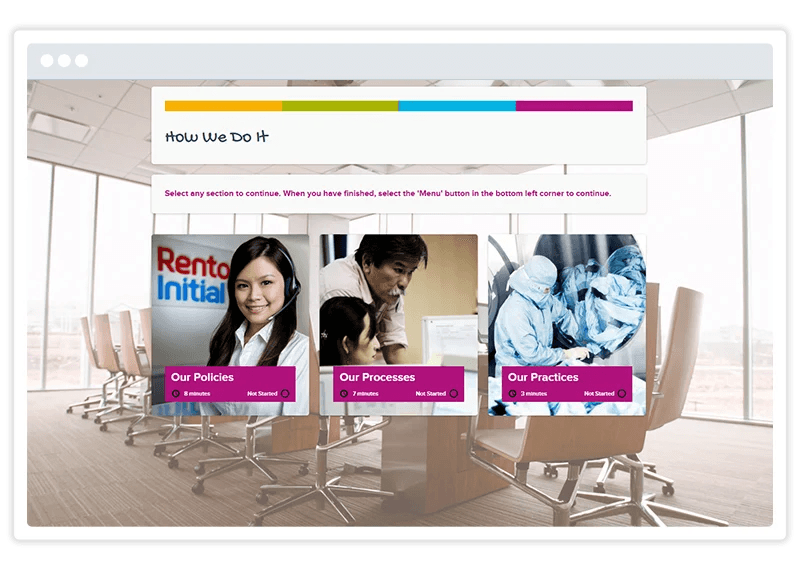
Source: Gomo Learning
They did this through an online learning platform and saw a 15% increase in compliance training completion rates. Therefore, their investment paid off.
Companies like PluralSight specialize in providing training and certification preparations for employees and companies. You can use such courses for general topics, such as using a particular tool or software.

Source: PluralSight
Online courses are a great, inexpensive option any company can benefit from. However, bigger companies out there can afford to focus on creating laser-sharp training courses adapted to their specific work processes.
A great example of a company that completely revamped its training and catered it to the needs of its employees and other course attendees is AAMCO.
The transmission-repair franchise invested $1 million in a learning management system (LMS) and created a training facility. Their university now holds courses on different aspects of their industry.

Source: Training Mag
When explaining why they chose to invest this much into employee training, their President and CEO Brett Ponton stressed that their goal was to have customers for life because of their quality training.
“The best way to do that is to have well-trained employees who consistently solve problems for their customers,” Ponton notes. Because of this, AAMCO provides over 300 online courses for its employees.
Nowadays it’s more important than ever to provide quality training for your employees because there are so many workflows and tools specific to every role. So, what’s stopping you?
After Action Reviews (AAR)
An after action review allows you to analyze a process in detail to figure out what happened and how to improve certain aspects of it. That way, you also share knowledge about it.
Companies try to make use of this military-developed method today, as its main principle is learning from your own mistakes. It makes sense to take your already existing processes and analyze them since you have to know how successful your existing methods are.
Once you isolate specific pain points, you can develop ways to improve them, thus upgrading the entire procedure.
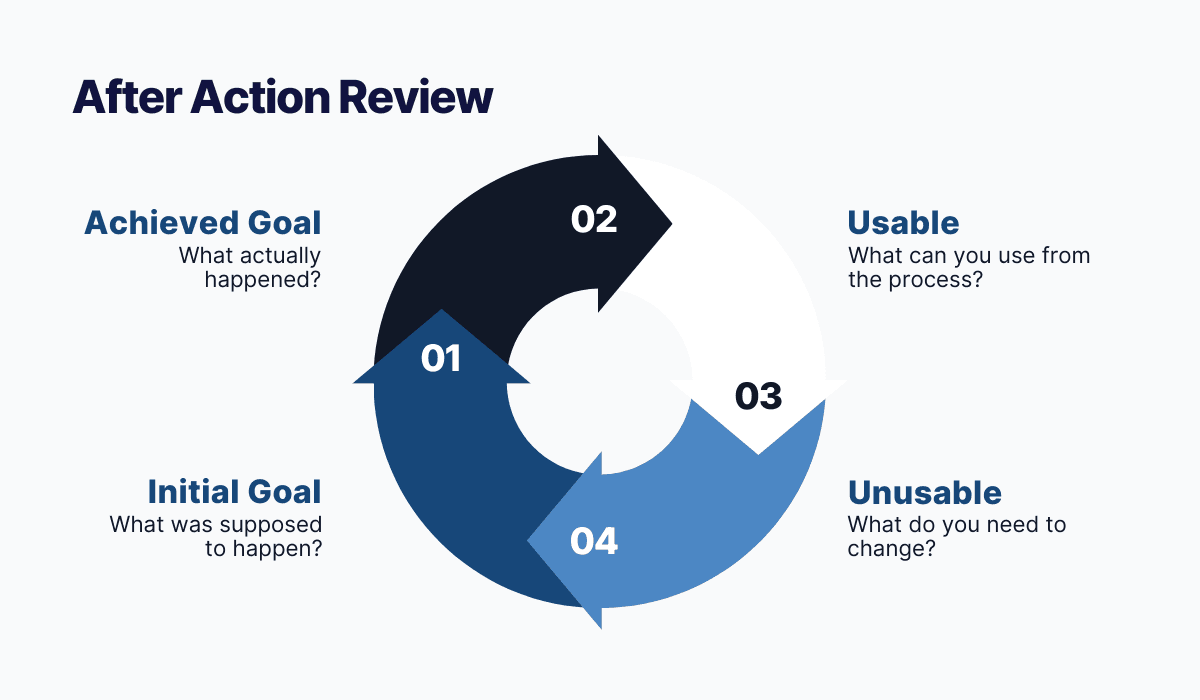
Source: Archbee.com
However, don’t treat this successful learning method as a simple formula.
Peter Senge, a system scientist, speaks very highly of AAR, claiming it’s one of the best learning methods out there.
Of course, it’s clear to see why Senge would think this, seeing as you get to learn from your example and immediately find ways to improve your processes, using the people who have worked on the project directly.
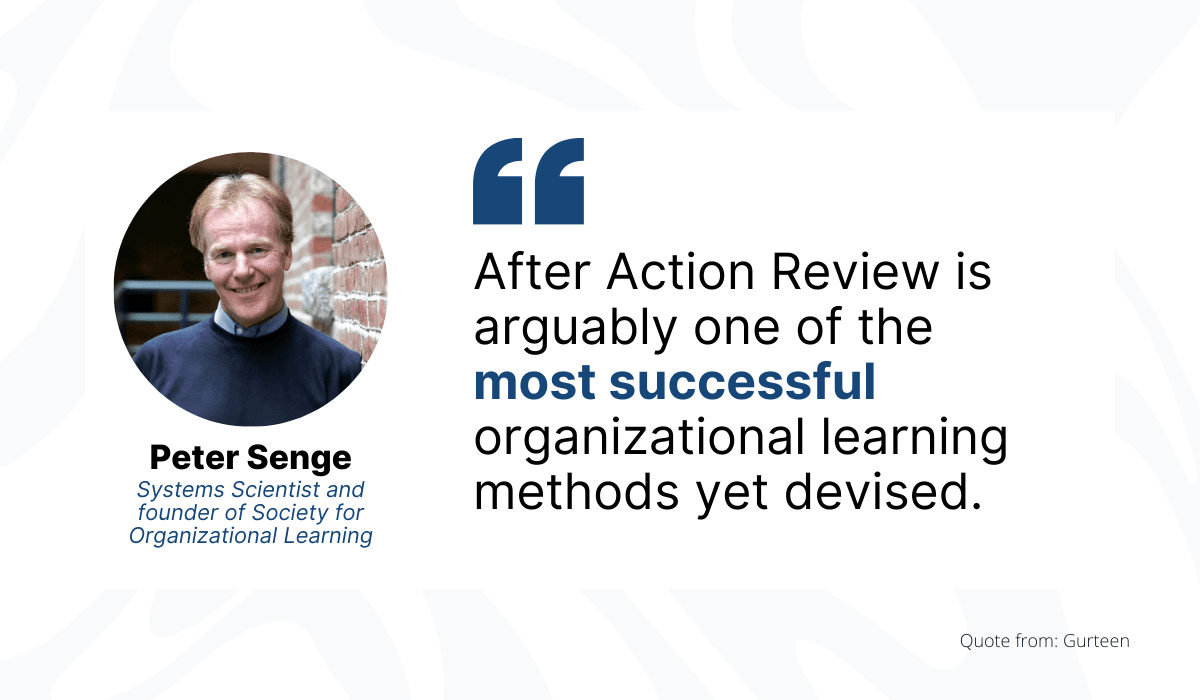
Source: Archbee.com
But the method is often used incorrectly by companies. According to Senge, “again and again, people reduce the living practice of AAR's to a sterile technique.”
Let’s see how you can avoid this.
Most experts agree that you should organize a meeting with the team instead of opting for good old 1-on-1s. In the case of AARs, it’s better to hear the entire team’s insights and opinions, especially when they can bounce ideas off each other.
Keep in mind that it would be best to have these meetings as soon as possible after the project or task is completed, just so the memory of it is still fresh in everyone’s minds.
Michael Lapp, the owner of Memecon, shared his AAR template through Miro, allowing other companies insight into their internal process.

Source: Miro
When you go into the meeting, you should stick to some structure and write down the points you will cover. Lapp divided his AAR into three segments: requests, achievements, and lessons learned.
During the meetings, you should discuss the original goal and what you accomplished, i.e., see what you originally planned and what ended up happening.
Then, you should decide which parts of the process were successful and which ones you should improve to achieve that original goal. Your main objective here is to identify process pain points and discover ways to upgrade them.
Internal Communication Platforms
Another excellent way for your team to learn and exchange knowledge is through your internal communication platforms.
Building a community is crucial, even more so for companies with employees working remotely or all over the country or the world.
You may have a quality employee handbook and an internal knowledge base and think that’s enough for your employees to learn, but the 70:20:10 Institute disagrees.
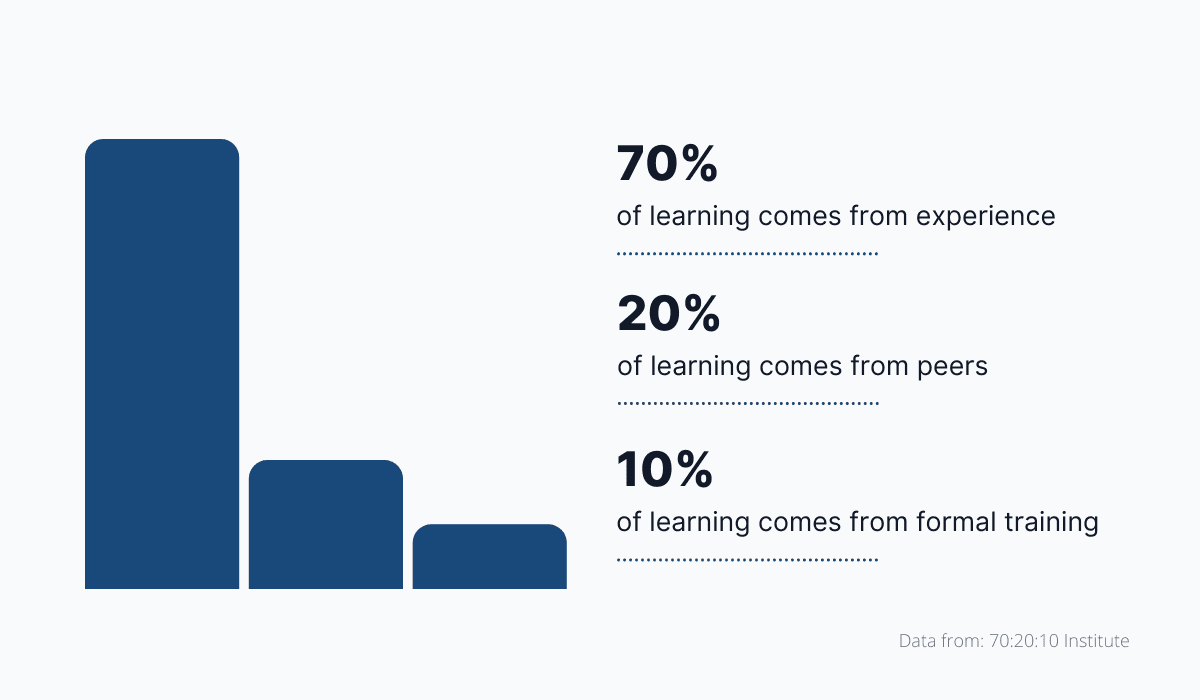
Source: Archbee.com
According to them, people get 10% of their knowledge from formal training, obtain double that from colleagues, and derive the rest from their own experience at the job.
Therefore, allowing employees to collaborate and learn from others will give them twice as much knowledge as all your formal training.
Think about the internal communication platforms you use. Do you still rely solely on emails for this purpose?

Source: Gmail
There’s nothing wrong with communicating with coworkers via email, but it might cost you a lot of time to send an email and wait to hear back from someone.
To put it differently, emails might lower your productivity, especially if employees can’t finish a task without hearing back from the colleague they’ve emailed.
However, not all is lost! Implementing social technologies for workplace communication can boost productivity by 20 to 25%.
Apps like Slack and Microsoft Teams are great for facilitating collaboration, sharing important announcements, and providing real-time updates, all of which save time and help people learn.
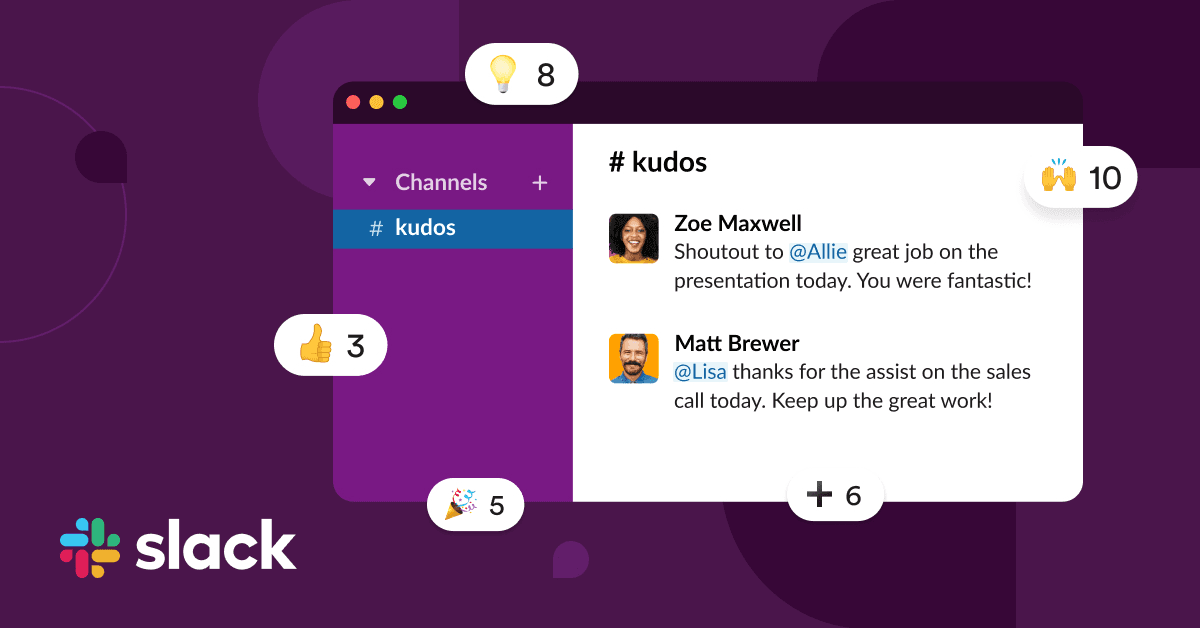
Source: Slack
While it’s more than acceptable to use communication apps like Slack, some companies have gone a step further and have their intranets.
A famous example is the foreign exchange company Travelex and their intranet, The Lounge.
When employees log in, they can see their timeline and any relevant changes, read new blogs, or access their quick links, such as “find a policy” or “IT service desk.”

Source: Medium
It’s safe to say that The Lounge isn’t just a business communication tool but a resource that also has a social, entertaining purpose.
Employees can access a new “wrap up” video weekly, created by the Communications & Performance Innovation Director, which gets around 11,000 views on average.
Clearly, people use the tool to connect with other employees and learn from them in engaging ways.
For example, who wouldn’t like to read an ice cream index for holidaymakers or the company’s international beer index?

Source: Interact
Moreover, Travelex allows employees to blog and post these articles on the homepage, thus engaging and encouraging workers to participate in the culture of knowledge sharing.
If you have the means to, think about creating an internal communication platform where your team can learn and grow but also have some fun and connect with their peers.
That’s where a lot of learning happens!
Project Documentation
You can use your project documents to share knowledge with your employees.
Among others, these documents include:
- Project proposal
- Project plan
- Project status report
So, the documentation contains every step of the process that made the project possible. Usually, the project manager (PM) writes down the points and methods needed to finish the project.
Some companies use project documentation templates to ensure uniformity. That way, employees get the same information for every single document project.
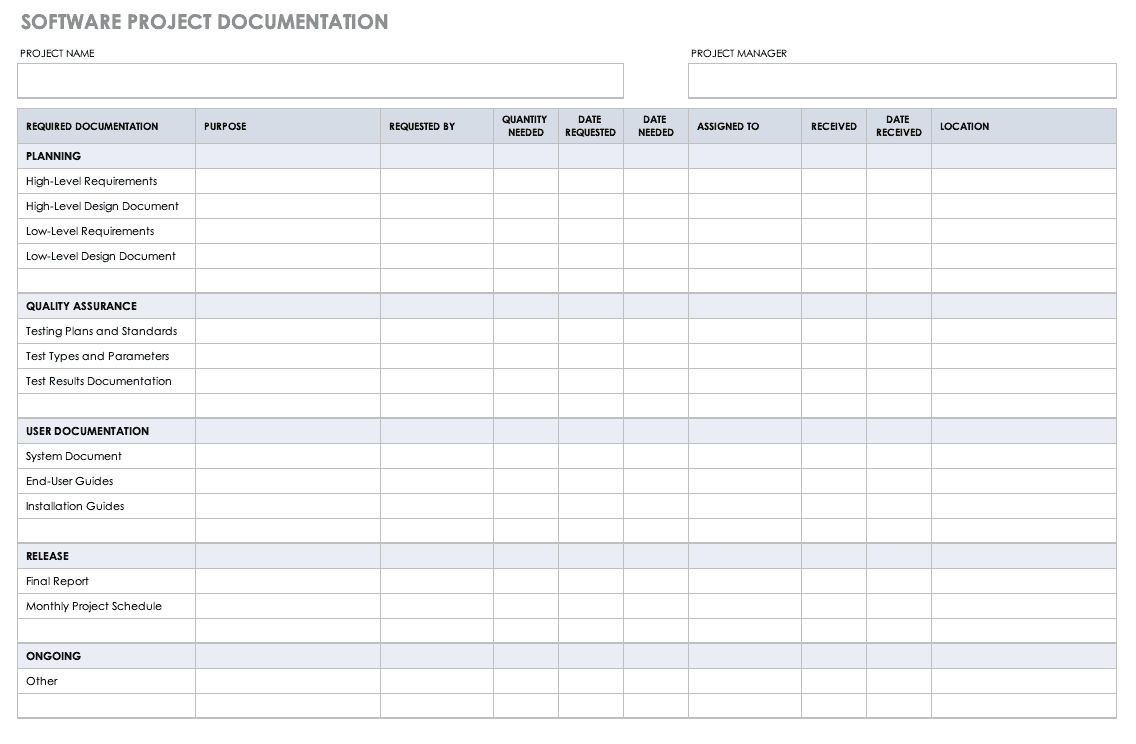
Source: Smartsheet
Sharing the process with the team allows them to learn and implement these steps in their projects.
If something goes wrong, the PM should add the status and explanation in the files, so that people can learn from the mistakes that were made, understand what to avoid and figure out how to solve issues that might pop up.
Since you’re in charge of sharing documentation, it is important to ensure everyone has access to it.
Research has found that 90% of employees want easy access to documentation that can help them do their job.
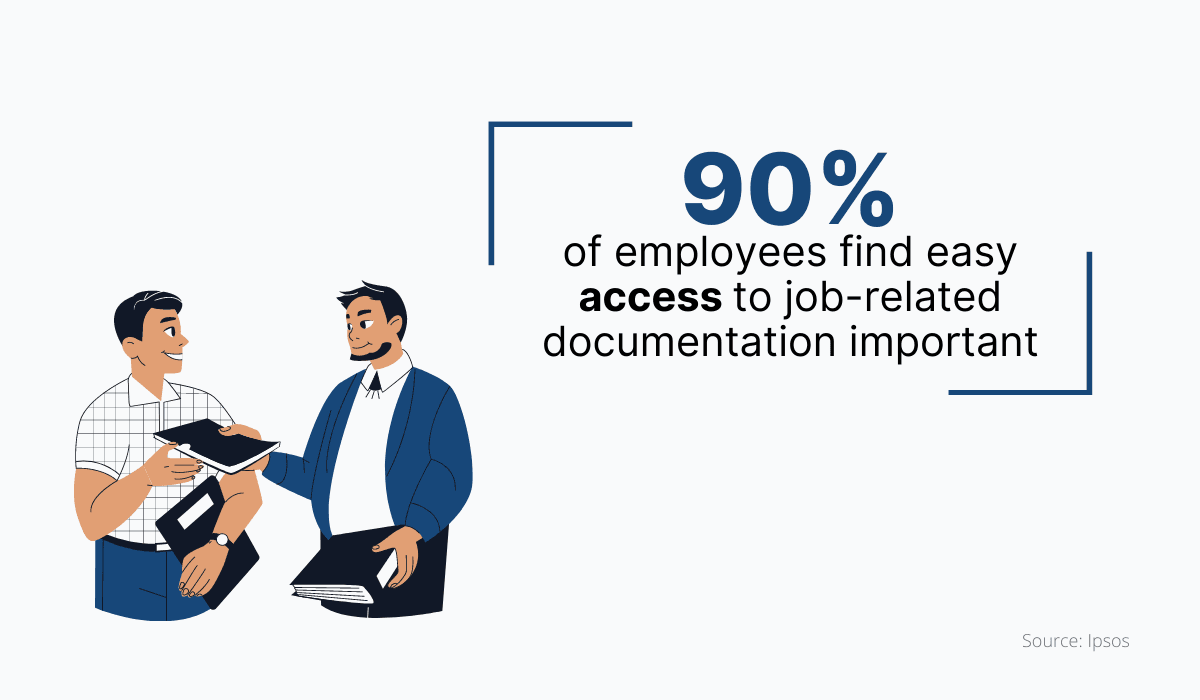
Source: Archbee.com
Making these documents available within your company will also help you with onboarding new employees.
There’s no better way to share knowledge with them than let them explore actual project documentation.

Source: Archbee.com
The easiest way to share project documentation and processes is through an internal knowledge base software.
Members who work on a particular project directly or manage it should have the ability to edit the files, while other employees should have reading and commenting privileges.

Source: Archbee.com
When you invest in knowledge management and collaboration through software like Archbee, you’re letting employees make significant contributions even if they weren’t directly involved.
Someone might spot a task that could have been done differently or improved and notify the project manager with a simple comment, thus improving the process quickly.
That way, even those who don’t interact with the documentation can learn from it and use it for their projects.
When sharing internal documentation this way, you’re being fully transparent and allowing team members to participate in the internal database and share their knowledge with others.
Standard Operating Procedures (SOPs)
Standard operating procedures are written instructions that help employees do their job and your company to stay compliant.
You should have SOPs for all your processes to ensure that everyone does tasks the same way and gets the same results. It sounds simple, yet only a handful of companies manage to capture this knowledge.
Nathan Eckel, an experienced data analyst, thinks many find this process boring, but is, nevertheless, convinced of its value.

Source: LinkedIn
However, in his opinion, SOPs are “key to sustainability and success.”
Eckel is right: without SOPs, you’re fostering tribal knowledge.
In other words, your official internal documentation contains just a fraction of your employees’ insights while the majority of it stays with the workers.
By doing this, you’re risking knowledge loss that occurs when people with unique skills and insights leave your company. It’s precisely what happened to 96% of companies during the pandemic.

Source: Archbee.com
Therefore, this fear could become your reality as well. The worst part about it?
Studies have found that knowledge loss leads to low productivity, decreased work quantity and quality, and low morale. You have to do everything in your power to capture and share those unique insights with everyone.
An essential aspect of SOPs is that the processes need to be defined, documented, and repeatable.
This means you have to write something that people can follow point by point and get the same results every time. That way, you’ll stay on the same level of productivity and consistency, thus keeping your customers happy.
Start writing these processes by asking for help from the people who go through these processes daily. Your employees will tell you exactly what they need to perform a specific task.
If you do it yourself, you’ll probably miss a step because you don’t have the tribal knowledge of someone who has hands-on experience.
Once you have the data, you have to find a format you’ll use for your SOPs. The good news is you don’t have to stick to the same design for everything, and you can experiment.
Here’s a fun example from Taco Bell Malaysia, which has published a summary of their SOPs on their Twitter account, thus showing the world what they can expect in their restaurants during the pandemic.
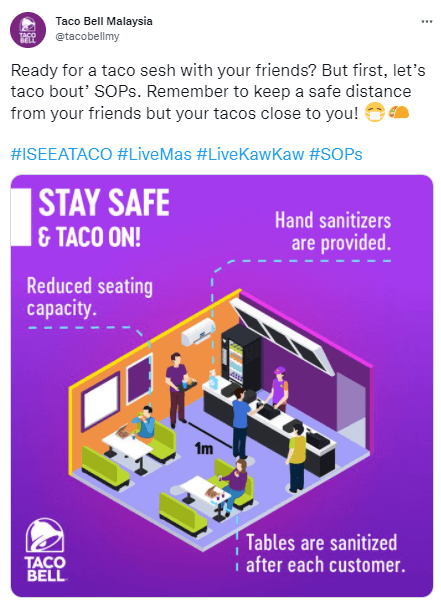
Source: Twitter
This simple image gives employees instructions: the seating must be limited, hand sanitizers refilled, and each table sanitized after use.
As you can see, SOPs don’t necessarily have to be boring chunks of texts no one will read. A simple image can transfer knowledge just as well.
Another good formatting example comes from the World Health Organization’s African Public Health SOPs.
They have decided to use a flow chart to explain the different steps of the process that takes place after receiving a public health alert.
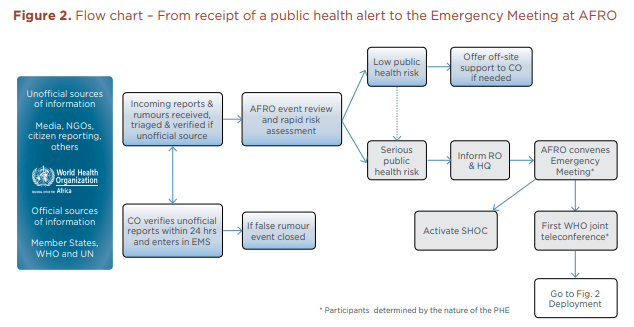
Source: WHO
The organization offers different options based on the scenario, all of them leading to some sort of action employees need to take to remedy the situation.
Clearly, you can experiment with your SOPs and formats.
The most important thing is to ensure that they are useful and share insights your employees have instead of relying on tribal knowledge and word of mouth idea-sharing.
Shared Digital Whiteboards
Digital whiteboards are a great collaboration tool your team can use to exchange insights and ideas.
Whiteboards aren’t a new concept, especially in business, but digitalization has brought its perks to this tried and true knowledge-sharing method. After all, digital whiteboards are endless, meaning you can always add more content to them.
Plus, unlike traditional whiteboards where you can only write with a marker or attach a paper with a magnet, digital whiteboards allow you to:
- Add stickers
- Group ideas by color, tags, keywords
- Use images, diagrams, graphs
- Comment and tag other people
These aspects can help your team collaborate and engage more during meetings.
Since going remote has drastically affected collaboration and productivity, whiteboards can help you get back on track.
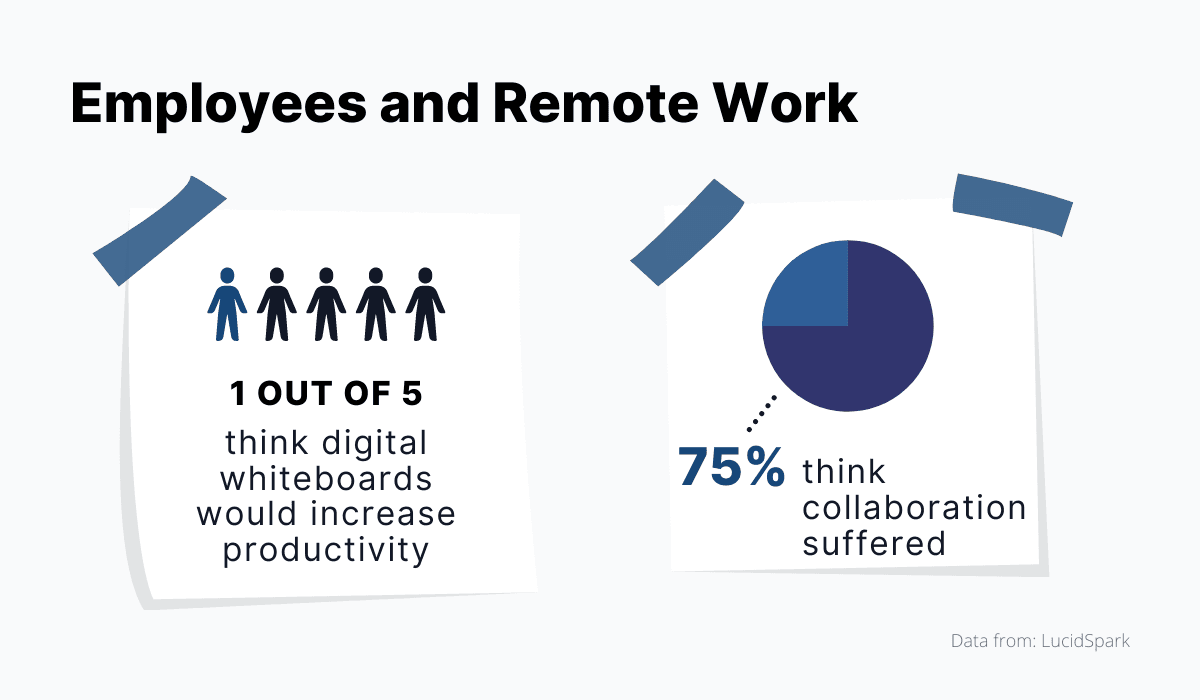
Source: Archbee.com
However, a fifth of employees believes that having a whiteboard they can all use to share their ideas would increase productivity. So, why not put it to the test?
Nathan Rawlins, Chief Marketing Officer at Lucid, believes that the popularity of remote work has rendered whiteboards essential.
Digital whiteboards ensure each team member can share and capture their thoughts in real time.
Of course, working remotely has its disadvantages, including making collaboration with the rest of the team more difficult.
However, Rawlins sees digital whiteboards as the solution since they ensure that “each team member, whether you’re brainstorming with a group of five or a group of 50, can share and capture their thoughts in real time and everyone has the same chance to contribute.”
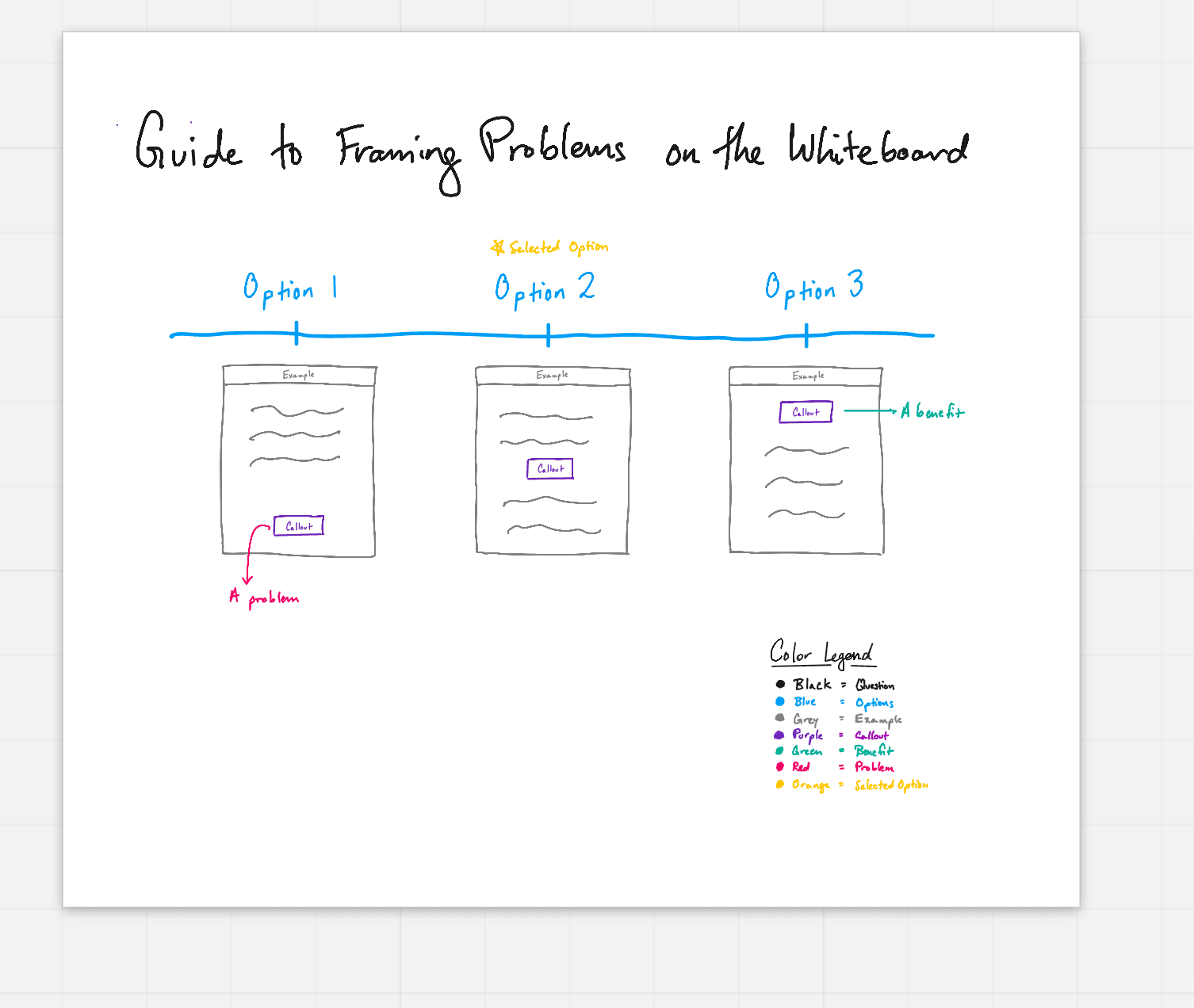
Example of a digital whiteboard template from Miro
Therefore, a whiteboard is a fun tool you can use to include the entire team. Teams can use it for internal meetings, you can use it for company-wide meetings, and every employee can use it to write down insights and share them with others.
You can use whiteboards in more ways than one, including recording the entire session or a part of it, doing a live broadcast, or working together with the call participants.
Some apps allow you to record online sessions and easily share them with the team through email, for example.
In the video below, you can see how whiteboarding can be recorded as a follow-up to a meeting or learning session and shared with the participants.
Source: Explain Everything on YouTube
Each software comes with specific features, so determine what would be best for your team.
Do you need to record these sessions and share snippets with everyone?
Do you want the entire team to be able to see everything, or do you want to limit access to certain whiteboards?
When you have answers to these questions, choosing a good digital whiteboard will be easier.
Conclusion
Knowledge sharing will help bring your company's productivity and collaboration to the next level. The more you allow employees to voice their opinions and share their insights, the more the entire team will learn and grow.
The options we’ve outlined in this article can drastically improve your collaboration and make your team more productive.
The best part about it is that they’re not mutually exclusive. So, use more of them at once and watch your collaboration and knowledge sharing skyrocket!
Frequently Asked Questions
Knowledge sharing is the intentional exchange of information, know‑how, and lessons learned across people, teams, and tools. It matters because it speeds up onboarding, prevents repeated mistakes, improves decision‑making, and raises productivity. Most learning at work happens through peers and real‑world experience—not just formal training—so creating easy ways to ask, document, and discover answers pays off. Practically, that looks like maintaining a searchable knowledge base, running debriefs after projects, and using chat or intranet spaces so expertise is accessible when and where people need it. The result is a more resilient organization that keeps performing even as roles, tools, and team members change.

